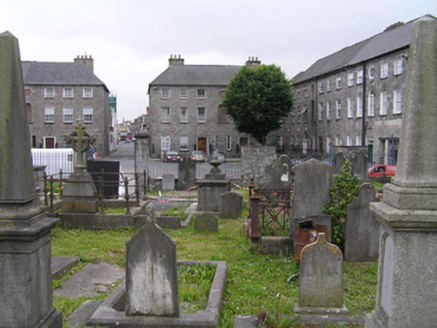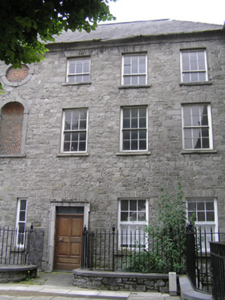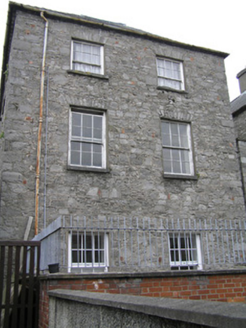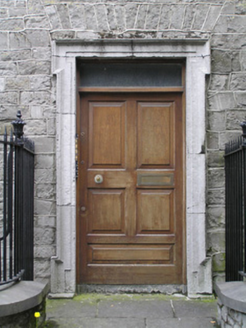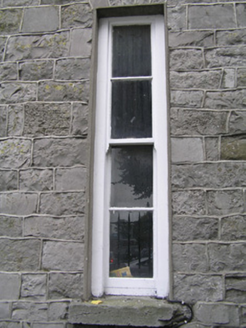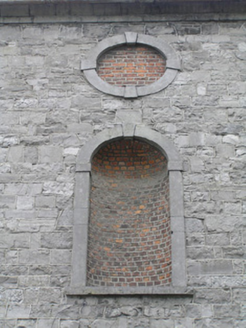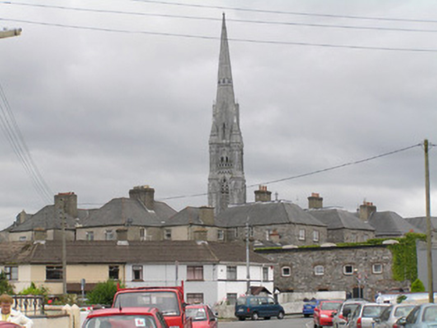Survey Data
Reg No
21513047
Rating
National
Categories of Special Interest
Architectural, Artistic, Historical
Original Use
House
Date
1740 - 1760
Coordinates
158157, 157004
Date Recorded
17/07/2005
Date Updated
--/--/--
Description
Corner-sited terraced three-bay three-storey over basement limestone former townhouse, built in 1751, compositionally united with No. 1 by a red brick niche beneath blind red brick oculus at second floor level. Full-height two-bay return to rear. Front site basement area enclosed from pavement. Pitched artificial slate roof hipped to west, with profiled eaves course supporting cast-iron rainwater goods. Squared and coursed limestone rubble walls with rubble limestone basement elevation and squared and coursed rubble limestone two-bay three-storey over basement return elevation. Limestone architrave to niche and oculus. Square-headed window openings with limestone voussoirs, cement rendered reveals, limestone sills; six-over-six timber sash windows to ground and first floor level and six-over-three timber sash windows to second floor level, all c. 1870. Square-headed door opening with limestone ashlar lugged and kneed architrave, raised and fielded panelled timber door, c. 1980, and glazed overlight; arrived at by a bridged limestone flagged front door platform flanked by rubble limestone plinth walls with limestone copings, which returns to enclose the basement area to east and west bays; raised and fielded panelled timber door and glazed overlight, c. 1980. Front door arrived at by a bridged limestone flagged front door platform flanked by modern plinth wall to east and original rubble limestone wall to west, returning on the curve, and supporting wrought-metal railings with pineapple finial, c. 2000.
Appraisal
John's Square was designed by Francis Bindon. He was born in Clare c. 1698 and died in 1765. His early career was as a painter. The Square is probably the most important classical building scheme of the mid eighteenth-century in Limerick City. Bindon's building activity in Ireland is entirely provincial, as no known buildings of his authorship are known to have been constructed in Dublin. This house, No. 2, is compositionally united with its neighbour, which is an architectural device continued around the square, except for the eastern end of terrace houses.
